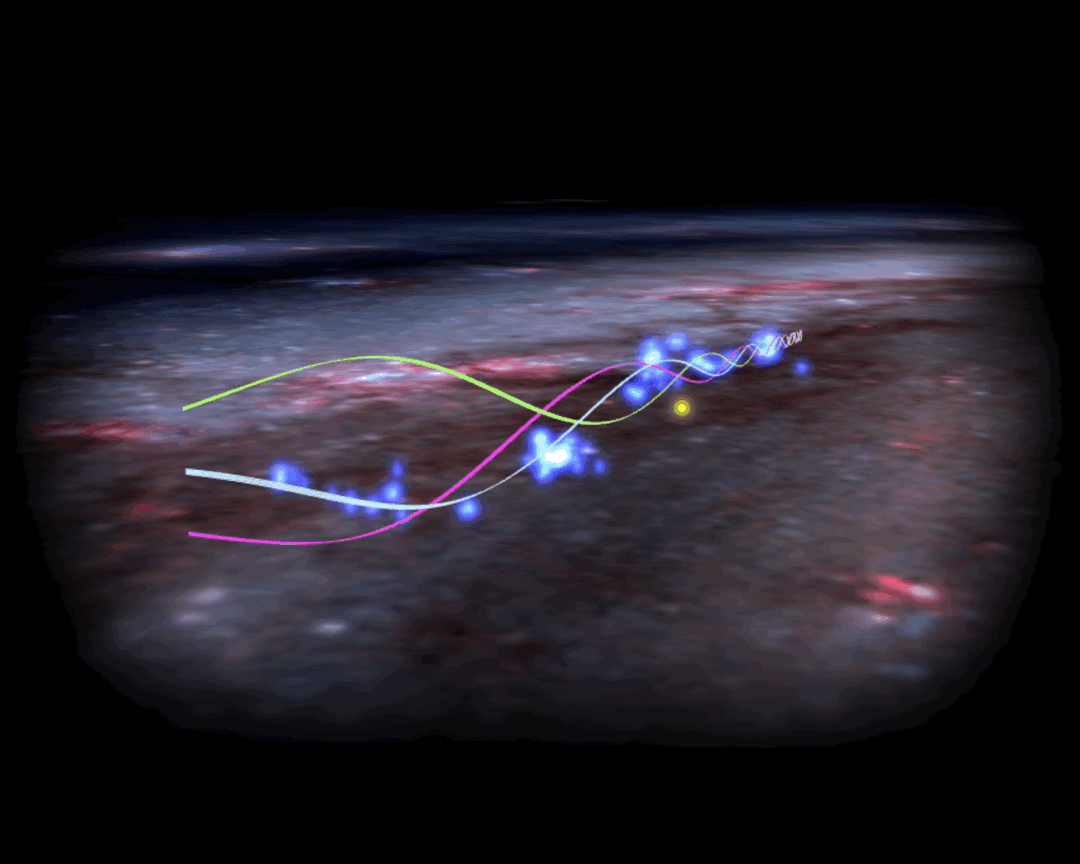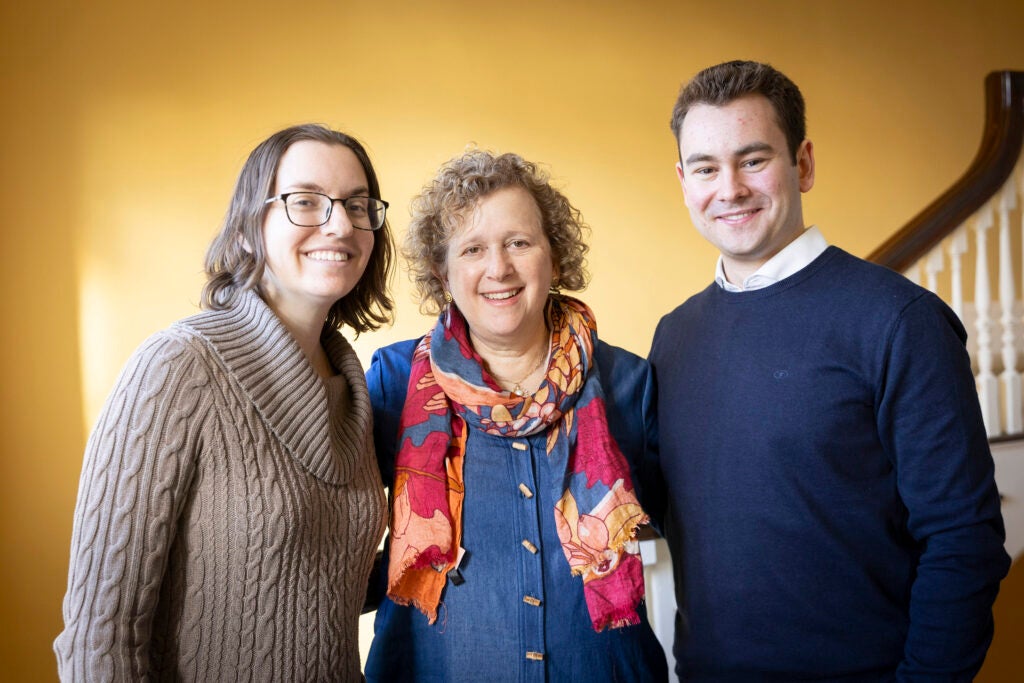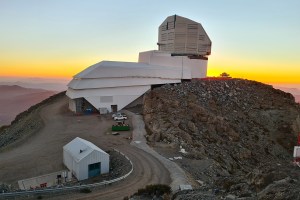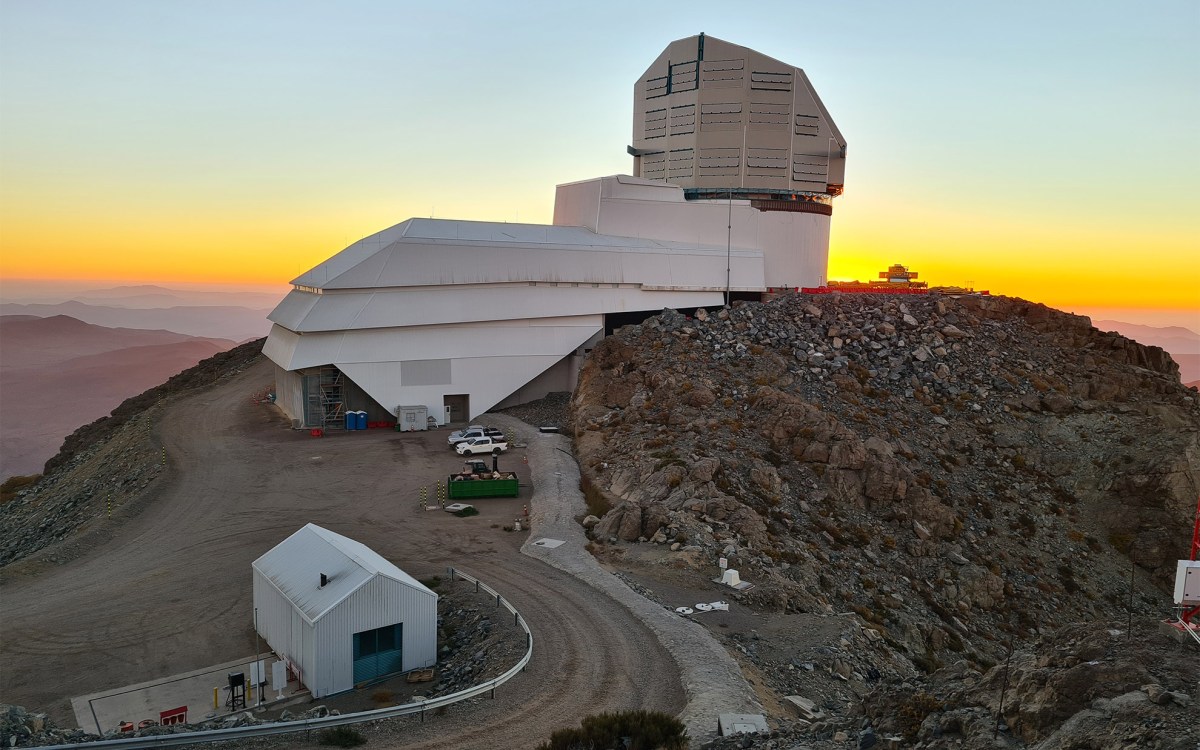‘Radcliffe Wave’ is waving

Credit: Ralf Konietzka, Alyssa Goodman, and WorldWide Telescope
Astronomers detail oscillation of our giant neighbor
A few years ago, astronomers uncovered an enormous secret: A wave-shaped chain of gaseous clouds in our sun’s backyard, giving birth to clusters of stars along the spiral arm of the Milky Way.
Having named this new structure the “Radcliffe Wave” in honor of the Harvard Radcliffe Institute, where the undulation was discovered, the team now reports in Nature that the Radcliffe Wave not only looks like a wave, but also moves like one — oscillating through space-time much like “the wave” moving through a stadium full of fans.
Ralf Konietzka, the paper’s lead author and a Ph.D. student at Harvard’s Kenneth C. Griffin Graduate School of Arts and Sciences, explains: “By using the motion of baby stars born in the gaseous clouds along the Radcliffe Wave, we can trace the motion of their natal gas to show that the Radcliffe Wave is actually waving.”

Catherine Zucker (from left), Alyssa Goodman, and Ralf Konietzka.
Niles Singer/Harvard Staff Photographer
Back in 2018, when University of Vienna professor João Alves was a fellow at Radcliffe, he worked with Center for Astrophysics researcher Catherine Zucker — then a Ph.D. student at Harvard — and Alyssa Goodman, Robert Wheeler Willson Professor of Applied Astronomy, to map out the 3D positions of the stellar nurseries in the sun’s galactic neighborhood. By combining brand-new data from the European Space Agency’s Gaia mission with a data-intensive technique called “3D Dust Mapping” — pioneered by Harvard Professor Doug Finkbeiner and his team — the researchers noticed a pattern emerging, leading to the discovery of the Radcliffe Wave in 2020.
“It’s the largest coherent structure that we know of, and it’s really, really close to us,” said Zucker, who describes the collaboration’s new work in a Sky & Telescope article. “It’s been there the whole time. We just didn’t know about it, because we couldn’t build these high-resolution models of the distribution of gaseous clouds near the sun, in 3D.”
Podcast offers a glimpse into the transformative scientific collaboration that has led to a series of discoveries about the Radcliffe Wave.
The 2020 3D dust map clearly showed that the Radcliffe Wave existed, but at the time no measurements were good enough to see if the wave was moving. But in 2022, using a newer release of Gaia data, Alves’ group assigned 3D motions to the young star clusters in the wave. With the clusters’ positions and motions in hand, Konietzka, Goodman, Zucker, and their collaborators were able to determine that the entire structure is indeed waving, moving like what physicists call a “traveling wave.”
A traveling wave is the same phenomenon we see in a sports stadium when people stand up and sit down in sequence to “do the wave.” Likewise, the star clusters along the Radcliffe Wave move up and down, creating a pattern that travels through our galactic backyard.
“Similar to how fans in a stadium are being pulled back to their seats by the Earth’s gravity, the Radcliffe Wave oscillates due to the gravity of the Milky Way,” Konietzka said.
Understanding the behavior of this 9,000-light-years-long structure, just 500 light-years from the sun at its closest point, allows researchers to now turn their attention to even more challenging questions. No one yet knows what caused the Radcliffe Wave or why it moves the way it does.
“Now we can go and test all these different theories for why the wave formed in the first place,” Zucker said.
“Those theories range from explosions of massive stars, called supernovae, to out-of-galaxy disturbances, like a dwarf satellite galaxy colliding with our Milky Way,” Konietzka added.
The discovery of the oscillation also raises new questions about the preponderance of similar structures both across the Milky Way and in other galaxies. Since the Radcliffe Wave appears to form the backbone of the nearest spiral arm in the Milky Way, the waving of the wave could imply that spiral arms of galaxies oscillate in general, making galaxies even more dynamic than previously thought.
“The question is, what caused the displacement giving rise to the waving we see?” Goodman said. “And does it happen all over the galaxy? In all galaxies? Does it happen occasionally? Does it happen all the time?”
The National Science Foundation, NASA, ESA, and the European Research Council Advanced Grant ISM-FLOW supported this work.





